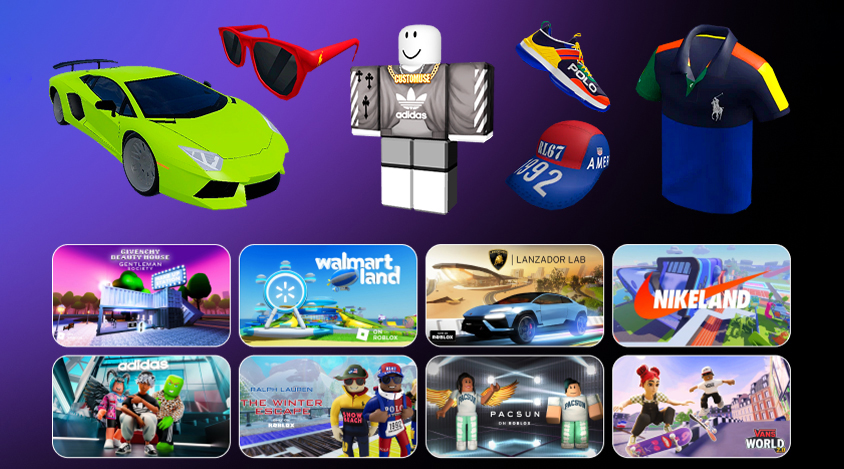The introduction of Web3 has brought a lot of new solutions and experiences for Internet users. With the metaverse, the epicenter of the Web3 revolution, we are getting closer to the sci-fi picture we have seen in literature or cinema. Metaverse real estate is one of the futuristic concepts we can already observe.
At first sight, metaverse real estate has solely entertainment value, a sort of fun artifact one can brag to a friend. However, as a company providing metaverse development services, we would not agree with that statement. Our experience has shown us the vast business potential of the virtual dimension. In the hands of professionals metaverse-based real estate turns into a powerful marketing tool, universal educational platform, or prosperous investment opportunity. Take a deep dive into the dimension of the real estate metaverse, as we thoroughly explore this phenomenon within this article.
Real Estate in the Metaverse: The Concept Explained
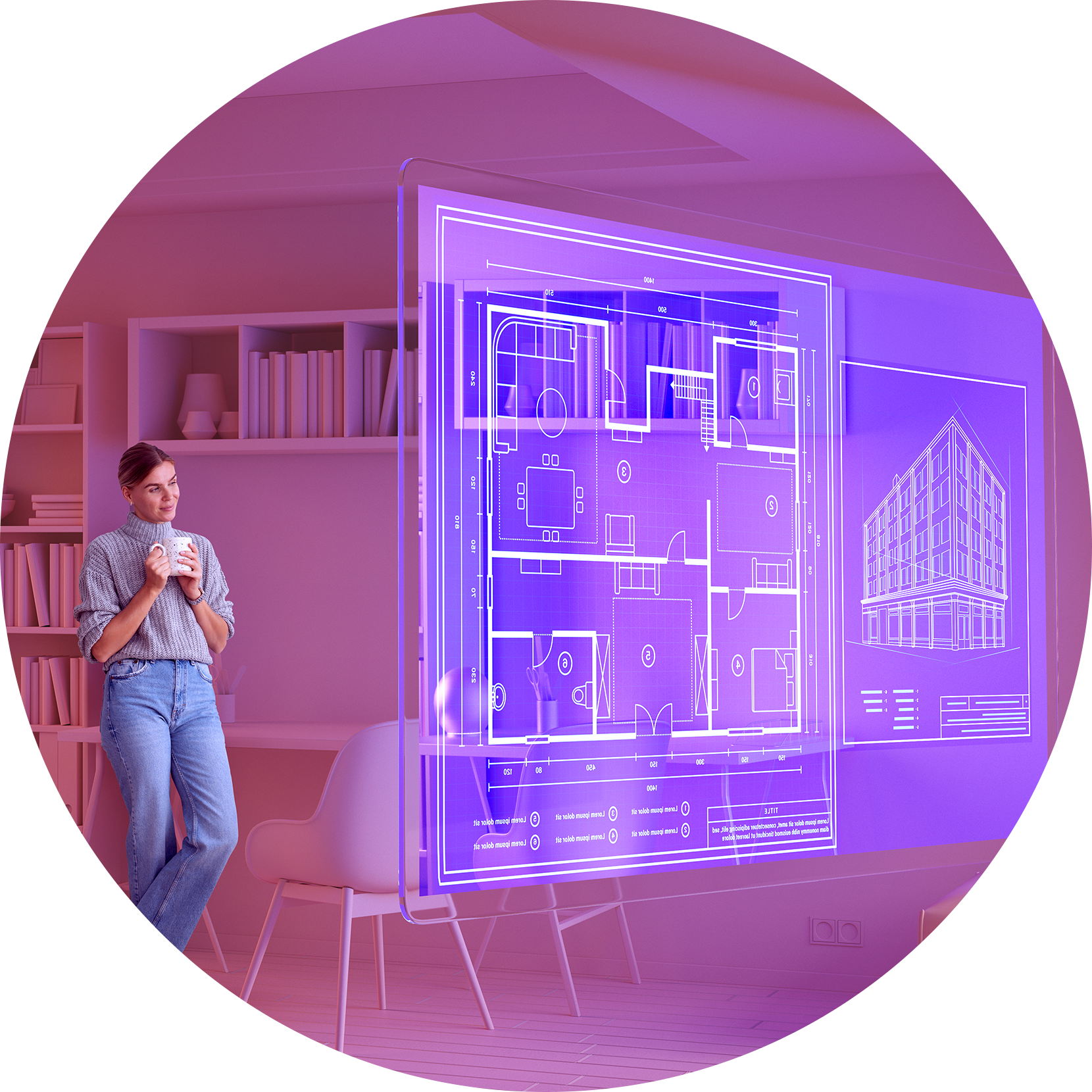
What is real estate in the metaverse? The metaverse, a term originally coined in the early '90s, has transitioned from being a mere science fiction concept to a burgeoning contemporary reality. Essentially, the metaverse is an expansive virtual environment, a collective of interconnected digital spaces, where users can interact, socialize, and even conduct business. At the heart of this metaverse lies a concept that many might find novel and, at times, bewildering: virtual real estate.
Much like our physical world, the metaverse is divided into plots or parcels of virtual land. These plots can be bought, sold, developed, or leased. But instead of brick-and-mortar structures, they're represented by digital constructs, from simple 3D spaces to intricate, immersive environments. These digital properties can host virtual events, concerts, art galleries, e-commerce stores, or even virtual homes and offices.
The intrinsic value of real estate in the metaverse is determined by its location, utility, and engagement potential. High-traffic areas, for instance, become prime digital real estate, much like a storefront on a bustling city street. Moreover, with the integration of blockchain technology, ownership and transactions of these virtual properties are secure, transparent, and tamper-proof, offering tangible value in an intangible space.
The limitless potential of the metaverse as a concept is a significant factor fueling the growth of virtual real estate. Without the constraints of physicality, one can construct a multi-story mansion on a tiny plot or a vast, sprawling park on land that might have otherwise been a small apartment. The only limitation? The creator's imagination.
As more individuals and businesses recognize the potential of the metaverse, the virtual real estate sector continues to expand. It's not just a game or a virtual playground; it's a revolution in how we perceive, value, and interact with space, both physical and digital.
How Metaverse Real Estate Differs from Traditional Real Estate
Let’s agree: metaverse real estate is a paradigm shift from traditional property concepts. Unlike tangible plots bound by geographical locations, metaverse properties exist in a virtual dimension, offering infinite potential for spatial creativity. While physical real estate is limited by environmental and legal constraints, digital spaces can be transformed at the whim of an owner's imagination.
The valuation of metaverse plots is influenced by virtual foot traffic and proximity to popular digital events or hubs, contrasting with traditional factors like infrastructure or neighborhood amenities. Transactions in the metaverse, often underpinned by blockchain technology, provide heightened transparency, security, and ease compared to traditional property dealings.
While traditional real estate is rooted in the physical world with its inherent limitations, metaverse real estate thrives on limitless potential, flexibility, and the evolving digital frontier.
Virtual vs. Physical Properties
Rapid technological advancement blurs the lines between virtual and physical realities, introducing a new world for society. But when it comes to properties, distinct differences emerge between these two domains. Let's delve into a concise comparison.
| Aspect | Virtual Properties | Physical Properties |
| Nature | Intangible, digital spaces | Tangible, real-world locations |
| Constraints | Limited by software capabilities and user imagination | Bound by environmental, zoning, and legal constraints |
| Valuation Factors | Virtual foot traffic, digital events proximity | Infrastructure, location, neighborhood amenities |
| Flexibility | Easily alterable and modifiable | Subject to physical and legal restrictions |
| Maintenance | Software updates, digital security | Physical upkeep, renovations, repairs |
While both virtual and physical properties offer unique advantages and challenges, the rise of the metaverse signifies the expanding dimension and potential of digital spaces in the future of property.
The Overview of the Current Metaverse Real Estate Market
The current metaverse real estate market is vibrant. The latest estimations show the metaverse real estate market size to be around $1.14bn in 2022. By 2030, it is predicted to expand 15 times and reach an impressive 15.69bn.
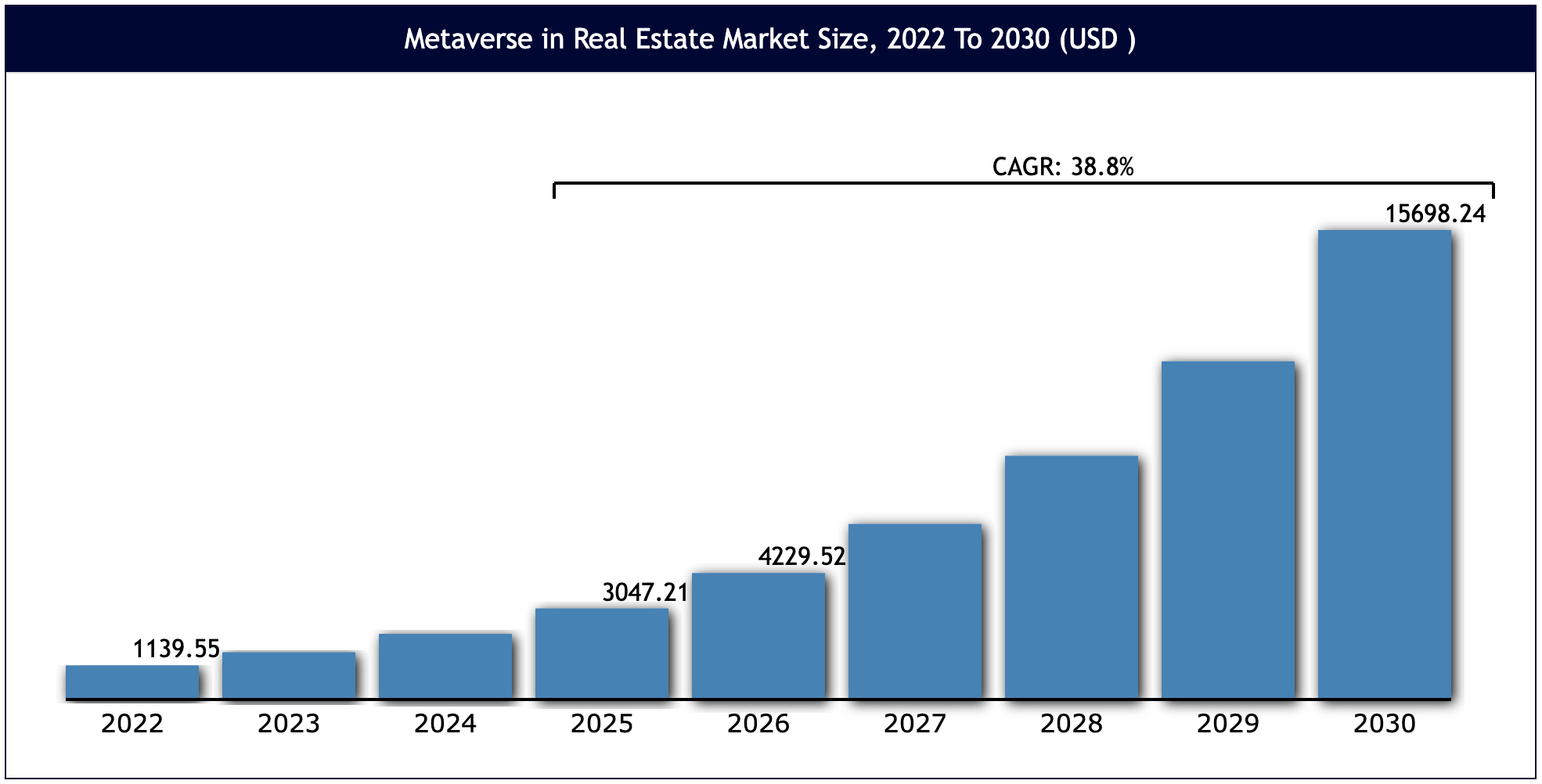
So what are the building blocks of metaverse real estate? We gathered the main elements creating this sector as it is.
1. Diverse platforms. The market is segmented across numerous metaverse platforms, each hosting its unique ecosystem. Decentraland, The Sandbox, and Cryptovoxels are among the most notable, each attracting different user bases and investment opportunities.
2. Rising investment. High-profile purchases by individuals and companies have significantly boosted the market's visibility, leading to a surge in interest and investment from a broader audience.
3. Evolving use cases. The metaverse real estate is not just about buying and selling virtual land; it has evolved to include commercial ventures, entertainment hubs, digital art galleries, and even virtual offices.
4. Fluctuating prices. As with any emerging market, the prices are highly volatile. Prime locations in popular metaverses command high prices, while less developed or newer platforms may offer more affordable options.
5. Challenges and opportunities. The market faces challenges, including technical barriers, lack of standardization, and regulatory uncertainty. However, these challenges present opportunities for innovation, improvement, and the establishment of best practices.
The current metaverse real estate market is marked by its diversity, innovation, and potential for growth, albeit accompanied by volatility and challenges that need addressing as the space matures.
How Does Metaverse Real Estate Work: The Main Aspects
The metaverse, an interconnected digital universe, is reshaping the way we understand real estate. No longer limited to physical land, property ownership now extends into the digital realm, opening up a world of possibilities. But how does one navigate this virtual property market? Let's break it down.
Major Platforms and Virtual Worlds
The modern metaverse exists in the form of various metaverse platforms. To buy or build metaverse real estate, you need to choose the virtual world you want to have it in. Here are the main metaverse platforms.
Decentraland
An Ethereum-based platform where users can buy, develop, and sell parcels of land. Each plot is represented by a unique non-fungible token (NFT).
Cryptovoxels
A user-owned virtual world powered by the Ethereum blockchain. Like Decentraland, land in Cryptovoxels is tokenized and can be developed using various digital tools.
Somnium Space
A VR-enabled universe where users can buy land, create VR experiences, and engage in social and economic activities.
The Sandbox
This platform allows users to own, create, and monetize their gaming experiences. Virtual plots can be transformed into interactive games, galleries, or events.
NFTs and Virtual Land Marketplaces
The bridge between the digital and real-world value in metaverse real estate is often the use of NFTs (non-fungible tokens). Unlike traditional cryptocurrencies like Bitcoin or Ethereum, which are fungible and can be exchanged on a one-for-one basis, NFTs are unique and can't be exchanged on a like-for-like basis.
Virtual lands are tokenized, meaning each plot or property is associated with a unique digital token that represents ownership. This token is stored on a blockchain, ensuring security, transparency, and tamper-proof records.
Platforms like OpenSea, Rarible, and SuperRare have become hotspots for trading virtual real estate. Users can list their virtual properties, represented by NFTs, for sale or auction, enabling a vibrant secondary market.
The decentralized nature of blockchain technology ensures that ownership rights are clear and can't be disputed, making the virtual land market robust and trustworthy.
Real Estate Development Companies
With the surge in demand for virtual properties, a new wave of real estate developers has emerged, focusing exclusively on the digital landscape. These companies, much like their traditional counterparts, engage in procuring, developing, and selling virtual plots but with a tech-savvy twist. We prepare the list of their main activities.
Design and development. Leveraging 3D modeling, AR, and VR technologies, these companies craft intricate virtual spaces, from sprawling metaverse mansions to interactive commercial hubs.
Land procurement. By participating in land sales organized by metaverse platforms or by purchasing lands from existing owners, these developers amass a portfolio of virtual real estate.
Collaborations. Partnering with brands, or artists, developers can enhance the value of the virtual plots. Hosting a branded event on a particular plot can significantly boost its price.
Rental and leasing. Just as in the real world, prime digital locations can be leased out for events, showcases, offices, or commercial spaces, generating a steady stream of revenue for its owners.
Metaverse Real Estate Development Cycle
The concept of real estate development in the metaverse is a fascinating blend of traditional property development principles and cutting-edge digital technologies. As with physical real estate, developing land in the metaverse follows a structured cycle, albeit with distinct phases tailored to the virtual world. Let's explore how to create metaverse real estate.
1. Land Acquisition
Before any development can begin, developers must identify and acquire a plot of virtual land. This involves researching various platforms, for example, the ones that we mentioned like Decentraland, Somnium Space, or The Sandbox, to find a parcel that aligns with their vision and budget.
Once a suitable plot is identified, developers purchase it, typically through virtual land marketplaces using cryptocurrency or platform-specific tokens. The acquired land's ownership is usually represented by a unique NFT, ensuring indisputable ownership rights.
2. Planning and Design
Developers conceptualize what they wish to create on the acquired land. This can range from virtual homes and commercial hubs to event spaces, parks, or interactive experiences.
Unlike traditional architecture limited by physics and material constraints, virtual designs can be far more imaginative. Using 3D modeling tools, designers craft detailed digital structures and landscapes, often integrating AR, VR, and other immersive elements.
3. Development and Construction
Just as physical developments require infrastructure like electricity and plumbing, virtual developments need foundational digital infrastructure. This can involve setting up servers, ensuring smooth user experiences, or integrating in-platform tools.
Instead of bricks and cement, virtual construction involves coding, graphics rendering, and digital modeling. Teams of digital architects and programmers work together to 'build' the planned structures on the virtual plot, ensuring they function correctly and are interactive as intended.
4. Testing
Before opening up the virtual space to the public or potential buyers, developers conduct thorough UX testing. They ensure that users can navigate the space intuitively, that graphics load seamlessly, and that interactions, such as opening doors or switching on lights, work properly.
Any glitches, bugs, or issues identified during testing are rectified. Given that virtual real estate exists within software, rigorous debugging is crucial to ensure that users have a pleasant and uninterrupted experience.
5. Launch and Marketing
Initially, the developed space might be opened up to a select group, much like a soft launch or beta testing phase. This helps gather additional feedback and make any final refinements.
Once fully ready, the virtual property is launched to the broader public. Developers might use a mix of traditional digital marketing techniques, platform-specific promotions, and collaborations with influencers or brands within the metaverse to attract attention to their new creations.
6. Maintenance and Updates
Post-launch, developers continuously monitor user interactions and feedback. This helps identify areas of improvement or any emerging issues.
To keep the space current and engaging, regular updates are essential. This can involve introducing new interactive elements, enhancing graphics, or expanding the property's features based on user demand and feedback.
The metaverse real estate development cycle marries the foundational principles of traditional property development with the limitless potential of digital technology. As the metaverse continues to grow and evolve, so too will the methods and nuances of virtual real estate development, promising an exciting future for both developers and virtual inhabitants.

How To Buy Real Estate In The Metaverse?
Buying real estate in the metaverse might seem daunting, but it's a relatively straightforward process once you're familiar with the digital landscape. We prepared a concise guide for those who are interested in the matter of buying real estate in the metaverse.
- Research platforms. Begin by exploring popular metaverse platforms like Decentraland, Cryptovoxels, or The Sandbox. Each has its unique ecosystem, currency, and land offerings.
- Create a digital wallet. To make purchases, you'll need a digital wallet compatible with the platform of your choice. Wallets like MetaMask or Coinbase Wallet are commonly used, storing your virtual funds and ensuring secure transactions.
- Browse available plots. Within your chosen platform, explore the available plots of land. Some platforms provide a visual map, allowing you to see the plots' relative locations, their sizes, and prices.
- Evaluate location. Just like traditional real estate, location matters. Consider the plot's proximity to popular hubs or events, which can influence its value, increase its price and make it a promising investment opportunity.
- Make a purchase. Once you've decided on a plot, follow the platform's purchase process, typically involving the transfer of cryptocurrency or platform-specific tokens in exchange for the land's ownership rights.
- Ownership verification. After purchase, the ownership of your virtual plot is often represented as a non-fungible token (NFT), providing indisputable proof of your ownership and protecting your plot from scam.
Remember, while the process of buying virtual land mirrors traditional real estate in many aspects, always consider the dynamic nature of the digital dimensions. If you have doubts or want to get a second opinion, consider using metaverse consulting services. Metaverse experts from Program-Ace are always ready to guide you through the complex world of virtual reality and help you make informed decisions.
Where To Buy Metaverse Real Estate?
Metaverse real estate is becoming a sought-after digital asset, and numerous platforms facilitate the buying and selling of these virtual properties. If you're wondering where to start your virtual real estate journey, let’s recap the main platforms you can use to find your metaverse dream house.
Decentraland. One of the pioneers in virtual real estate, Decentraland offers a vast marketplace where users can browse, buy, and sell plots known as "LAND." Each plot is represented as a unique NFT on the Ethereum blockchain.
Cryptovoxels. Another Ethereum-based platform, Cryptovoxels lets users buy and develop parcels of land in a vibrant, voxel-based world. The platform has a user-friendly interface, making transactions relatively straightforward.
The Sandbox. This platform combines gaming with virtual real estate, allowing users to buy "LAND" which they can develop into interactive games or experiences. The Sandbox's marketplace showcases available plots and their prices.
Somnium Space. A VR-centric platform, Somnium Space offers immersive plots that users can develop into immersive, engaging 3D experiences. Their marketplace displays available land with details on size and location.
Virtual Land Marketplaces. Websites like OpenSea and SuperRare have dedicated sections for metaverse properties trades, allowing users interested in such properties to buy or sell virtual land across different platforms.
When buying metaverse real estate, always ensure you're using reputable platforms and marketplaces, and consider conducting thorough research before making any purchase decisions.
How Much Does Metaverse Real Estate Cost?
The cost of metaverse real estate varies widely, influenced by a multitude of factors that resemble both the digital world's dynamics and traditional real estate principles. It is hard to give numbers, as the market is changing, but we can explain the pricing factors determining the metaverse real estate cost.
Platform popularity. Just as property values differ between prime city locations and suburban areas, virtual land prices fluctuate based on the platform's prominence. Popular platforms tend to have higher land prices than newer or less-known platforms.
Location within the metaverse. Land near central hubs, popular attractions, or frequented pathways generally commands higher prices. Virtual plots offering better 'views' or situated near iconic landmarks can also cost more.
Size and functionality. Larger plots or those with unique features (like enhanced interactivity) might have a heftier price tag, as these attributes can significantly enhance the user experience and investment potential.
Market dynamics. Like any market, prices are influenced by demand and supply. As the metaverse concept gains traction, there's been a noticeable surge in prices. But remember, the digital realm can be volatile, so costs can swing either way.
Historical sales. High-profile sales can set precedents for land values. Plots that have seen significant historical transactions might inflate neighboring land values, as buyers often use these benchmarks to gauge the potential ROI.
On average, as of the last known data, smaller plots in less popular areas might start from a few hundred dollars, while prime locations in renowned metaverses can fetch hundreds of thousands or even millions. However, these figures can rapidly evolve, so continuous market research is essential.
Successful Metaverse Real Estate Projects
As the metaverse continues to gain traction, numerous real estate projects within these digital realms have stood out, both in terms of innovative design and high ROI for investors. Let's explore some notable ventures that have marked their success in the metaverse.
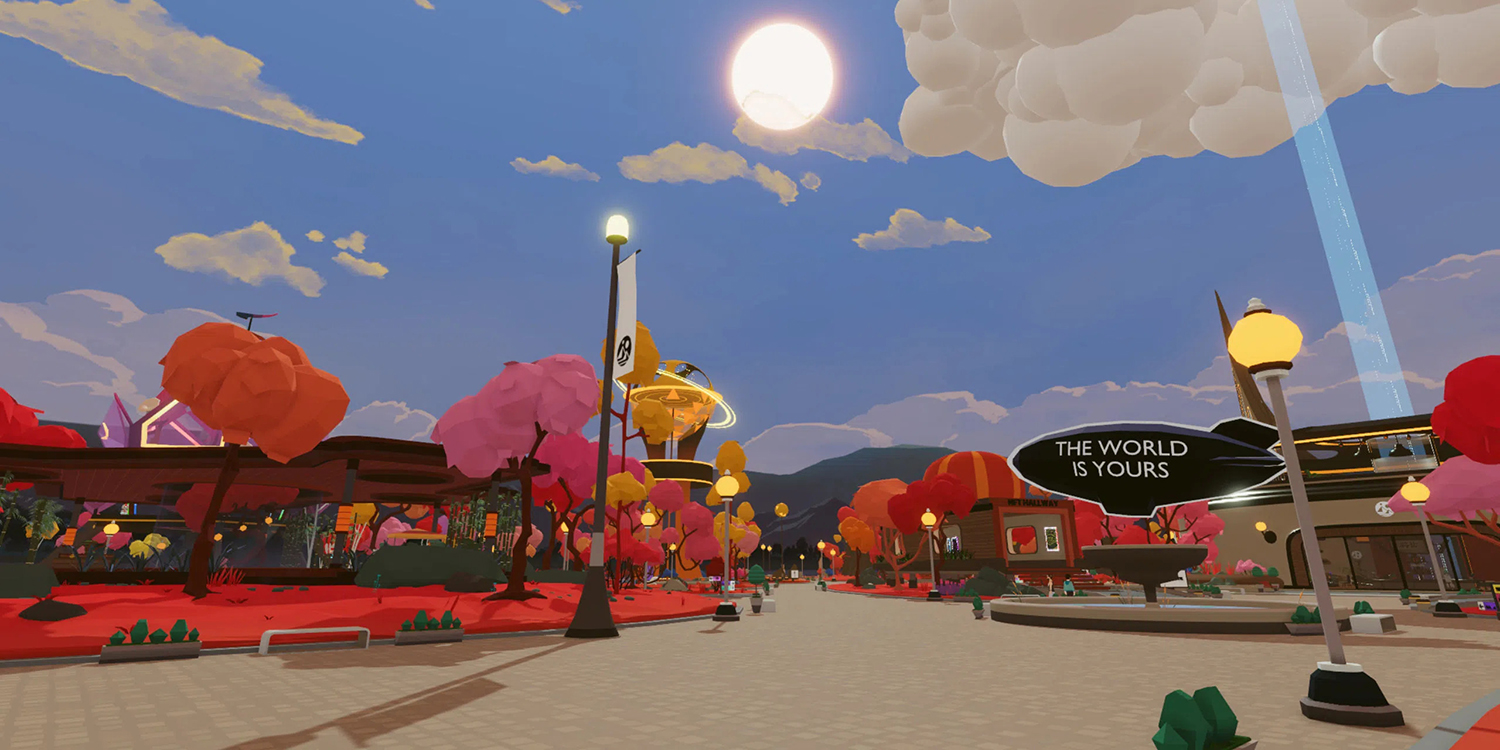
Decentraland's Genesis Plaza. Situated at the heart of Decentraland, the Genesis Plaza serves as a welcoming point for newcomers. This community space, surrounded by art installations and interactive exhibits, not only provides a guide to the platform's functionalities but also stands as a testimony to the potential of virtual communal spaces.
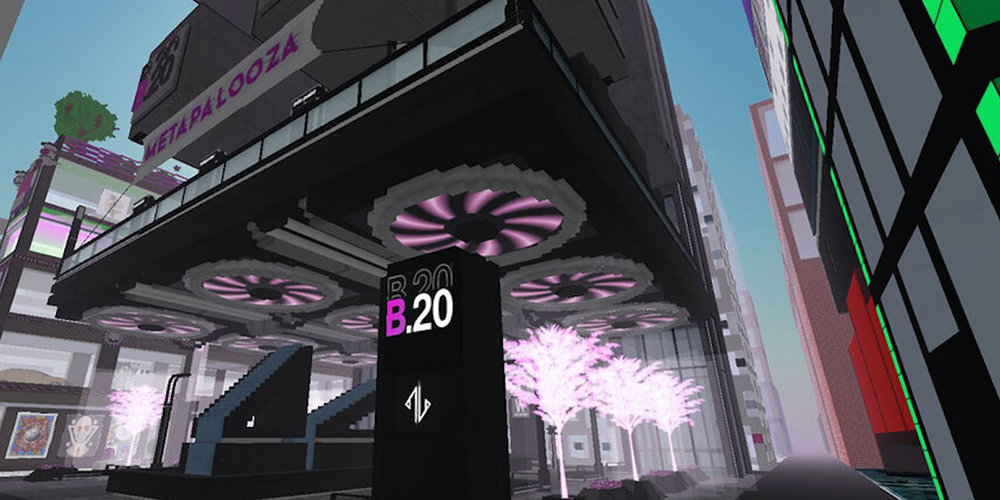
CryptoVoxels' Neon District. This vibrant district is a bustling commercial zone in Cryptovoxels, where virtual reality and blockchain technology converge to create a truly immersive experience. Known for its eclectic mix of galleries, shops, and entertainment hubs, it has attracted significant footfall, making properties here highly sought after.
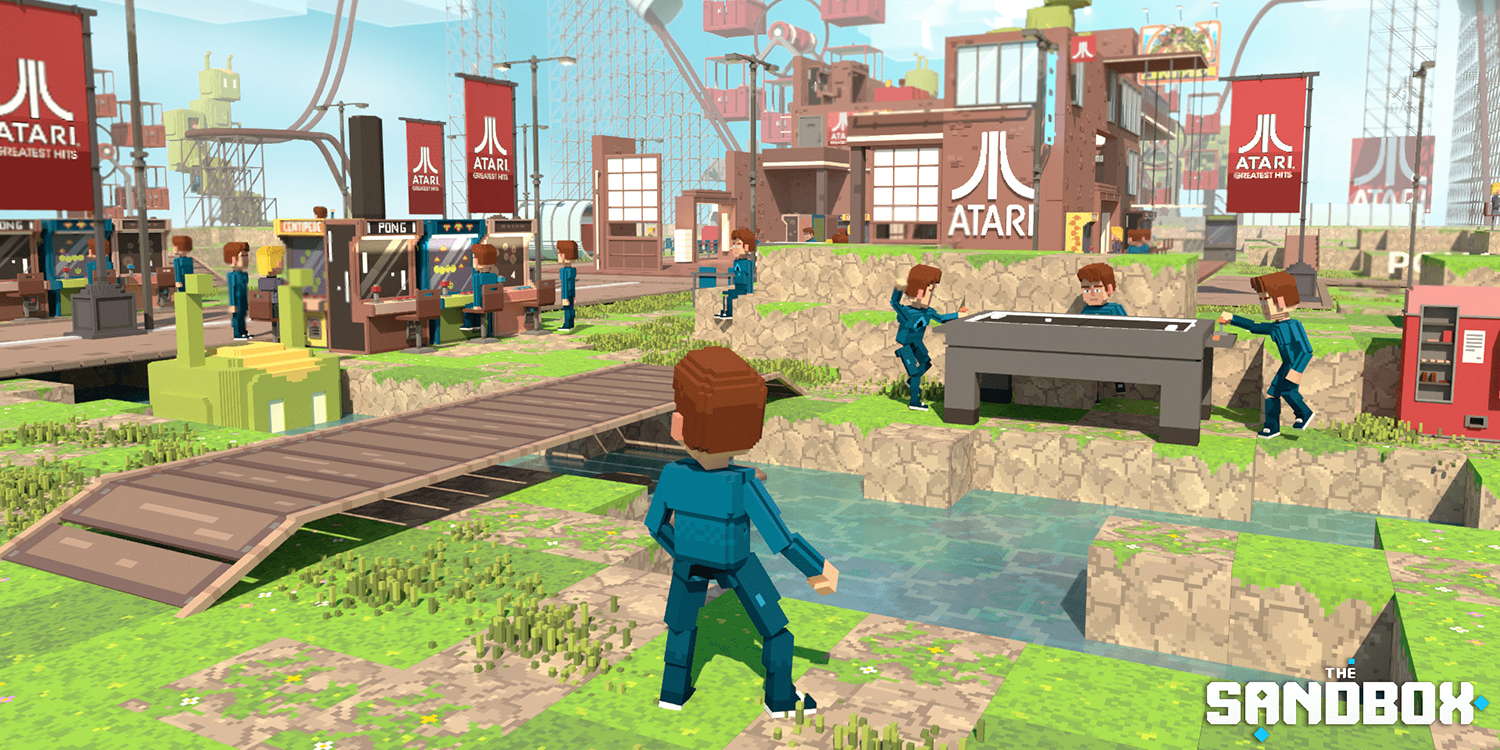
The Sandbox's Atari Theme Park. A collaborative effort between The Sandbox and the iconic gaming brand Atari, this theme park boasts roller coasters, arcade zones, and other attractions in the metaverse. Such branded partnerships highlight the lucrative potential of merging gaming, branding, and virtual real estate.
These projects underscore the diverse possibilities of the metaverse for real estate. Whether it's commercial hubs, entertainment zones, or residential areas, the success stories from different platforms offer a glimpse into the future, where the lines between physical and virtual realms continue to blur.

Program-Ace’s MetaOffice: The New Reality of the Corporate Collaboration
MetaOffice, a metaverse-based workspace developed by Program-Ace, is a hybrid platform, meticulously designed for both PC and VR users, enhancing the realms of presentations, collaborations, and even relaxation. Users can host presentations, meetings, or just casual gatherings in an environment that’s bolstered by animated visuals, captivating soundscapes, and diverse effects.
The platform provides users with full avatar control through WASD on PCs and an extensive VR suite that includes features like full-body tracking and facial animations that activate when engaging with a microphone. This comprehensive solution can support up to 32 participants on a single server, thereby making it a prime choice for larger teams or conferences.
On project completion, MetaOffice emerged as a dynamic solution for two types of users: collaborators and innovators. The platform has been segmented into several tangible benefits:
- creation of multiple virtual workspaces without extensive technical know-how;
- a secure environment for remote collaboration, minimizing potential risks;
- user-friendly scenarios and tools for quick onboarding;
- an immersive platform promoting user engagement, creativity, and shared experiences;
- seamless integration possibilities with third-party tools and applications.
Build Your Metaverse Real Estate with Program-Ace
The convergence of the metaverse and real estate creates a set of innovative opportunities for enterprises, tech enthusiasts, and artists. New experiences and approaches await those who are open to exploring the metaverse.
However, entering the metaverse is not a walk in the park. You need a strong backup of technical specialists with relevant experience, so they know how to harness the power of cutting-edge technologies without getting exposed to cyber threats or losing resources. Program-Ace, a software development company with metaverse specialization, can become your reliable partner on your metaverse journey. Feel free to contact us and learn more about our expertise. Let’s build your metaverse empire together!
